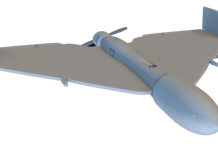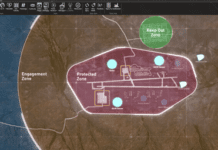This post is also available in:
 עברית (Hebrew)
עברית (Hebrew)
A new reconnaissance vehicle will have new ways to sense and communicate. U.S. military researchers are developing a prototype Armed Reconnaissance Vehicle (ARV) to enable the Marine Corps battlefield reconnaissance units to gather and disseminate crucial intelligence information from the battle front.
The future ARV will be able to fight for information on a complex and contested battlefield using an automatic rapid-fire medium-caliber cannon, remotely operated medium-caliber machine gun, and open-architecture advanced vetronics to include sensors, communications, and battlefield networking.
The ARV demonstrators will be designed to collect mobility data, determine reconnaissance and sensing capabilities, determine unmanned systems integration and operation, evaluate platform lethality, determine platform survivability, and evaluate overall performance.
A $19-million contract was offered to SAIC (Science Applications International Corp.) for a portion of the ARV program that involves advanced high-risk technology development called “at the edge.”
The project seeks to build two ARV variants — a base model and an at-the-edge model. Contractors will build two demonstrators of each variant, according to militaryaerospace.com. SAIC has been selected for the at-the-edge model. This variant will be operational, but isn’t supposed to have the durability necessary to withstand sustained operations on the battlefield. It is to demonstrate enabling technologies at technology readiness level 5, which seeks to validate components in a simulated or real environment.
Advanced electronic technologies will include a self healing cyber-safe electrical and data distribution architecture; communications with technology refresh updates every four years that supports secure voice, video, and data exchanges in GPS-denied environments; interfaces to launch, control, retrieve, and recharge unmanned aerial vehicles (UAVs) and unmanned ground vehicles (UGVs); modular electronic architectures to support insertion of emerging technologies and multi-mission payloads; and manned and unmanned teaming operations with robotics and autonomy.
The demonstrator also will have protection from direct fire, underbody, and top attacks; energy-attenuation seats to protect the crew from IED attacks; water mobility sufficient for shore-to-shore operations; transportability aboard a landing craft air cushion (LCAC); and crew vision systems for reconnaissance.
Technology demonstrators will have modular open systems architectures, with an eye to future integration of third-party hardware and software and will enable third-party repair.
The ARV could replace the legacy Light Armored Vehicle (LAV). The vehicle will have new ways to sense and communicate, will be able to destroy heavily armored threats close-in and at range, and will be transportable with the naval expeditionary force by military and commercial trailers, railway, C-17 fixed-wing aircraft, naval amphibious warfare ships and surface connectors, etc.


























